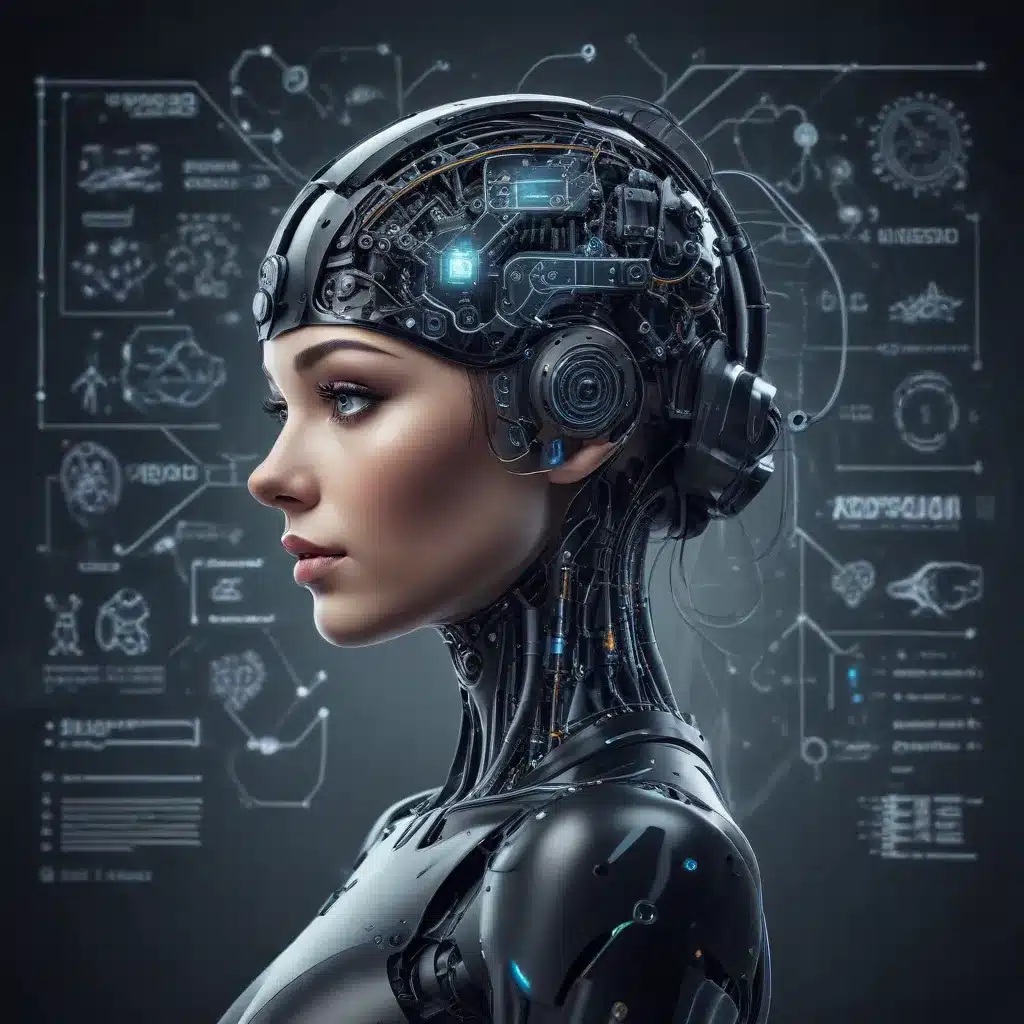
The Impact of AI on the Graphic Design Industry
The Transformative Power of AI in Graphic Design
As an experienced IT professional, I’ve witnessed the rapid advancements in artificial intelligence (AI) and its profound impact on various industries, including the world of graphic design. In this comprehensive article, we’ll explore how AI is reshaping the landscape of visual creativity, empowering designers to push the boundaries of their craft and deliver exceptional results.
The Rise of AI-Powered Design Tools
One of the most significant ways AI has transformed graphic design is through the emergence of cutting-edge design tools that leverage machine learning algorithms. These tools are revolutionizing the design process, automating tedious tasks, and enabling designers to focus on the creative aspects of their work.
Intelligent Image Manipulation: AI-powered image editing software, such as Adobe Photoshop’s Neural Filters, allows designers to manipulate and enhance images with unprecedented ease. These tools can intelligently remove unwanted elements, seamlessly blend textures, and even generate completely new images based on user prompts, saving designers countless hours of manual work.
Automated Layout and Composition: AI-driven layout and design tools, like Canva’s Magic Resize and Layouts, can analyze design elements and automatically generate visually appealing compositions. These tools can intelligently arrange text, images, and other design components, helping designers create professional-grade layouts with minimal effort.
Intelligent Color Palettes: AI-powered color palette generators can analyze design trends, user preferences, and color theory to suggest harmonious color schemes that elevate the visual impact of designs. Tools like Adobe Color and Coolors streamline the color selection process, enabling designers to quickly find the perfect color combinations for their projects.
Voice-Activated Design: Emerging voice-controlled design tools, such as Adobe Sensei and Figma’s voice features, allow designers to issue verbal commands to perform various design tasks. This hands-free approach can significantly boost productivity, as designers can focus on their creative vision without being distracted by the technicalities of the software.
Enhancing Creative Workflows
In addition to revolutionizing design tools, AI is also transforming the overall creative workflow for graphic designers. By automating repetitive tasks and providing intelligent assistance, AI is empowering designers to work more efficiently and focus on the core aspects of their craft.
Predictive Design Suggestions: AI-powered design assistants can analyze a designer’s past work, design trends, and user preferences to suggest design elements, layouts, or color schemes that align with the project’s goals. This predictive capability can inspire new ideas and help designers avoid creative blocks.
Collaborative AI Assistants: AI-powered design assistants, such as Anthropic’s Claude and Anthropic’s AI, can engage in natural language conversations with designers, providing real-time feedback, answering questions, and even collaborating on ideation and problem-solving. These assistants can help designers explore new concepts, refine their ideas, and streamline the creative process.
Intelligent Design Optimization: AI-powered design optimization tools can analyze a design’s performance, user engagement, and accessibility, and provide data-driven recommendations for improvements. This allows designers to make informed decisions, enhance the user experience, and continuously refine their work.
Democratizing Graphic Design
One of the most significant impacts of AI in the graphic design industry is its ability to democratize the field, making it more accessible to individuals with limited design expertise.
AI-Powered Design Templates: AI-generated design templates, available through platforms like Canva and Adobe Spark, enable even non-designers to create visually striking designs. These templates leverage machine learning to ensure consistent branding, typography, and layout, empowering users to create professional-looking designs with minimal effort.
Automated Design Generation: AI-driven tools, like Midjourney and DALL-E, can generate unique, high-quality images based on textual prompts. While these tools are not a replacement for skilled designers, they can serve as a starting point for ideation, allowing non-designers to explore visual concepts and inspire new design directions.
Enhanced Accessibility: AI-powered design tools are also improving accessibility for individuals with disabilities. Features like voice-to-text, text-to-speech, and color-blindness simulation can help designers create more inclusive designs that cater to diverse user needs.
Embracing the Future of Graphic Design
As AI continues to evolve, it will undoubtedly reshape the graphic design industry in profound ways. While some may fear that AI will replace human designers, the reality is that AI will likely enhance and empower designers, allowing them to focus on the more creative and strategic aspects of their work.
Graphic designers who embrace the power of AI will be well-positioned to thrive in the years to come. By seamlessly integrating AI-powered tools and workflows into their design process, they can unlock new levels of creativity, efficiency, and innovation, delivering exceptional results for their clients and audiences.
However, it’s important to note that the true value of AI in graphic design lies in its ability to complement and empower human creativity, not replace it entirely. Skilled designers who can harness the power of AI while maintaining their unique artistic vision and problem-solving abilities will be the ones who drive the industry forward.
Conclusion: Embracing the AI-Powered Future of Graphic Design
The impact of AI on the graphic design industry is undeniable. From intelligent design tools to enhanced creative workflows and the democratization of design, AI is transforming the way designers work and the quality of the work they produce.
As an experienced IT professional, I encourage all graphic designers to embrace the power of AI and integrate it seamlessly into their design process. By leveraging the latest AI-powered tools and workflows, designers can unlock new levels of creativity, efficiency, and innovation, delivering exceptional results for their clients and audiences.
Remember, the future of graphic design is AI-powered, but the true value lies in the seamless collaboration between human creativity and machine intelligence. Embrace the change, adapt to the new possibilities, and be at the forefront of this exciting evolution in the graphic design industry.












